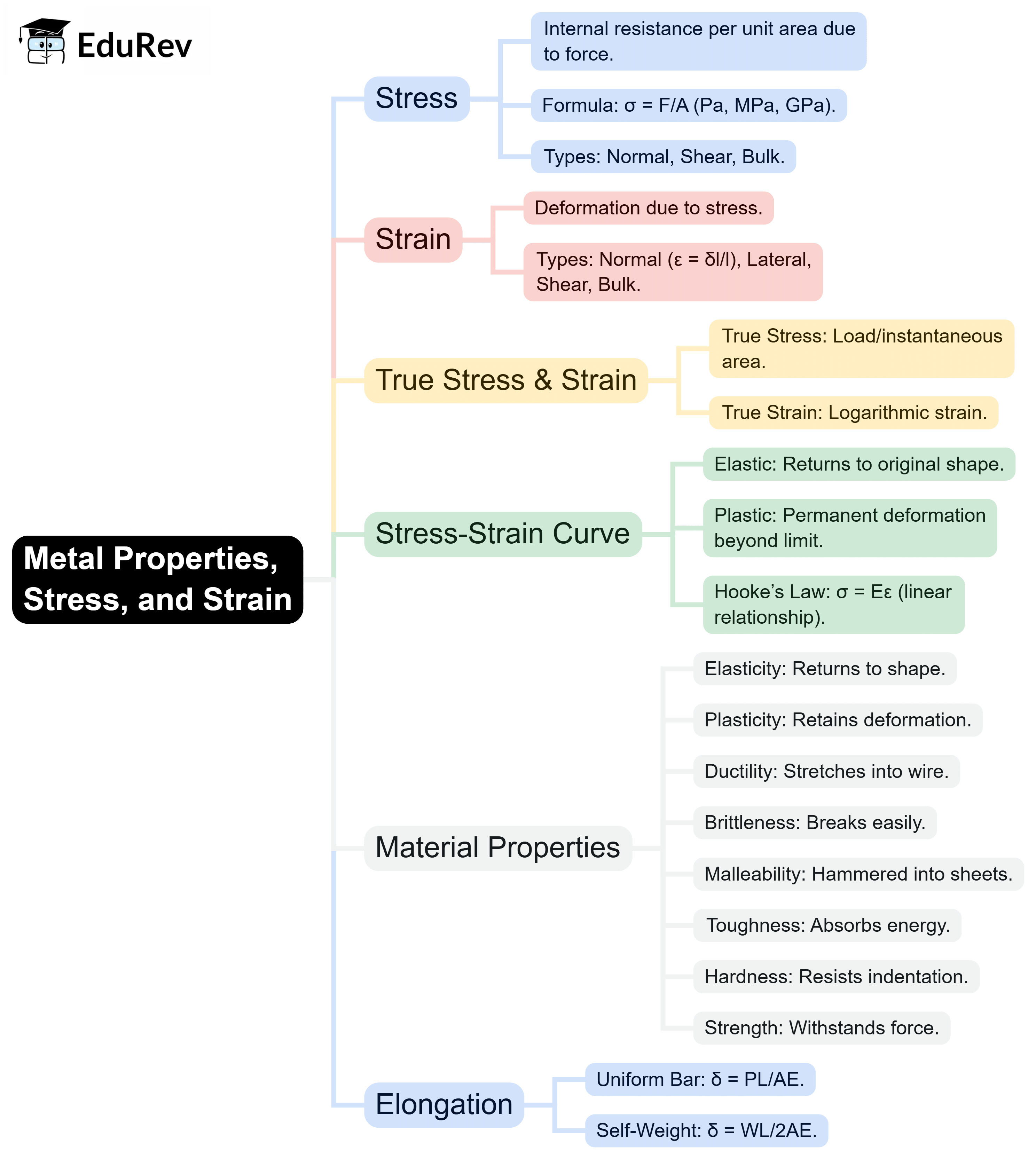Mechanical Engineering Exam > Mechanical Engineering Notes > Strength of Materials (SOM) > Mind Map: Mechanical Properties of Materials
Mind Map: Mechanical Properties of Materials | Strength of Materials (SOM) - Mechanical Engineering PDF Download

The document Mind Map: Mechanical Properties of Materials | Strength of Materials (SOM) - Mechanical Engineering is a part of the Mechanical Engineering Course Strength of Materials (SOM).
All you need of Mechanical Engineering at this link: Mechanical Engineering
|
37 videos|106 docs|48 tests
|
FAQs on Mind Map: Mechanical Properties of Materials - Strength of Materials (SOM) - Mechanical Engineering
| 1. What are the main mechanical properties of materials? |  |
Ans.The main mechanical properties of materials include tensile strength, compressive strength, shear strength, ductility, hardness, toughness, and fatigue resistance. These properties determine how materials respond to various forces and conditions.
| 2. How does tensile strength differ from compressive strength? |  |
Ans.Tensile strength refers to the maximum amount of tensile (pulling) stress that a material can withstand before failure, while compressive strength is the maximum compressive (pushing) stress the material can endure. Both properties are crucial for understanding material performance under different loading conditions.
| 3. What is ductility and why is it important in materials? |  |
Ans.Ductility is the ability of a material to deform under tensile stress, often characterized by the material's ability to stretch into a wire. It is important because it allows materials to absorb energy and deform without breaking, which is essential in applications like construction and manufacturing.
| 4. How does hardness relate to wear resistance in materials? |  |
Ans.Hardness is a measure of a material's resistance to deformation and scratching. Generally, harder materials tend to have higher wear resistance, making them suitable for tools and components that experience friction and wear during use.
| 5. What role does fatigue resistance play in material selection? |  |
Ans.Fatigue resistance refers to a material's ability to withstand cyclic loading without failure. It is crucial in applications where materials are subjected to repeated stress, such as in aircraft components and bridges. Selecting materials with high fatigue resistance ensures longevity and safety in structural applications.
Related Searches
















